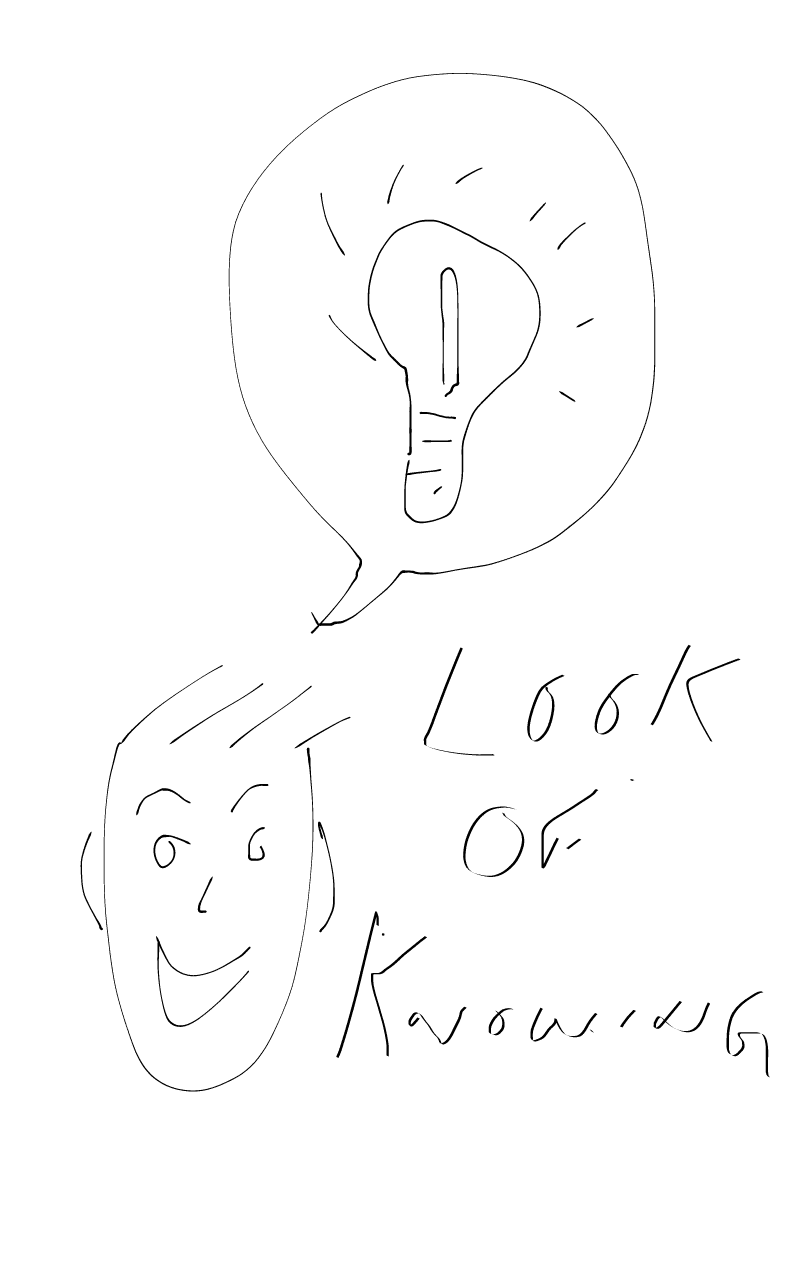One the techniques I’ve discovered and honed through the years of educating adults I call:
“The Look of Knowing”
You’re no doubt aware of the look even though you may not know it had a name.
It goes something like this:
Me: “2 + 2 = 4, right?”
Student: nods approvingly, with a little light bulb brightly lit over their head.
The “Look of Knowing” is a good thing.
- It tells you that the student is comprehending what you’re sharing.
- When you’ve hit the target with that part of your content, it’s time to move on to what’s next.

Ah, but what about when we don’t see the “Look of Knowing”? And what does the “Look of NOT Knowing” look like?
- When someone is not comprehending the topic, they’ll have a blank or flummoxed look on their face … and their head will definitely NOT be nodding with approval.
- They may be stuck on understanding what you said, what you said an hour ago … or they could be wondering if they turned off the coffee maker before they left home.
In any case, when we see the absence of the “Look of Knowing”, they’re NOT learning so we need to stay alert when the room is full of more bewilderment than recognition.
These “looks” provide real-time indicators if we’re hitting the target with our topic.
Armed with that information we can speed up, slow down, go back or start over.
** Remember, adults like to know that they have some influence over the speed and direction of their learning so this technique helps give them instant results.
Click HERE to Sign Up for More FREE Instructional Mastery Content
With practice, we improve our ability to scan the room for these looks and adjust on the fly. It can be even easier than that though …
Early in a course – especially one with mandatory content on a slide filled with template language! – I actually tell the students what I’ll be looking for.
I explain the “Look of Knowing” and then actually demonstrate what it looks like.
Then I tell them: “When I see enough “Looks of Knowing” around the room, I know that I’ve hit my target so now I should move on.”
Then I add: “However, if I don’t see enough “Looks of Knowing” then I will conclude that I did not do a good enough job explaining the topic and that I should start over and talk slower.”
I end with: “Does everybody understand the significance of the “Look of Knowing”?
And then, like magic, the students all nod their head approvingly, illustrating the textbook “Look of Knowing”.
And the benefits of that technique can last all course.
I’ve heard of instructors who pass out red, green and yellow cards for the student to raise if they‘re having trouble following along and need to communicate to the instructor.
My take:
- Your mileage will of course vary but to me, passing out colored cards adds unnecessary friction to a classroom.
- Supporting them on the front end AND paying close attention to their level of comprehension pays off for them now and in the future.
So, how do you insure that your students are comprehending what you’re sharing?

